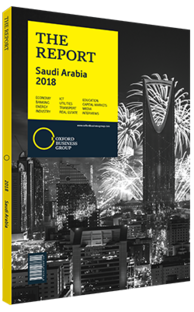Mohammad Sanusi Barkindo, Secretary-General, Organisation of the Petroleum Exporting Countries (OPEC): Interview

Interview: Mohammad Sanusi Barkindo
To what extent has OPEC’s decision to adjust production achieved its intended target?
MOHAMMAD SANUSI BARKINDO: Thus far, the results are encouraging. From January 1, 2017 OPEC and a group of 11 leading non-OPEC oil producers began the implementation of production adjustments totalling 1.8m barrels per day (bpd). We have seen a steady rise in conformity. In January 2017 conformity levels were 86%, while in February this improved even further, rising to 94%. In March and April conformity reached 98% and 102%, respectively. Inventory levels are decreasing, investor sentiment has improved and industry investment is starting to pick up. This high level of conformity is bearing fruit, especially when you consider how far the oil market has evolved since the market rebalancing process began. These are all signs of a renewed sense of positive momentum and stability in the global oil market.
What can be done to improve coordination on production between OPEC and non-OPEC members?
BARKINDO: We are making every effort to achieve our common goal of lasting stability in the global oil market. The decisions taken at a recent meeting of OPEC and non-OPEC states in May 2017 have provided a renewed sense of forward momentum to this collaborative process, and are a testament to the determination of the 24 participating countries to achieve healthy oil market growth. This is the only way forward for our industry.
How will unconventional production affect OPEC member states moving forward?
BARKINDO: The future energy environment will certainly have an adequate number of challenges, but it will also offer many opportunities. In the coming years the world will need more energy to fuel a rapidly growing global economy, which is expected to more than double by 2040. It must also meet the increasing needs of the world’s massively expanding population, which is forecast to reach a staggering 9bn people by 2040.
To meet this demand, all forms of energy will be required, including renewables such as wind and solar, which are expected to continue increasing. In terms of non-OPEC supply, we have seen a decline in recent times due to the low oil price environment. However, there has been an uptick of late, mainly due to the resurgence in US tight oil production. In the long term we expect non-OPEC supply to continue to rise steadily, reaching a high of 61.4m bpd in 2027, before dropping to 58.9m bpd in 2040. This all boils down to the fact that OPEC will be needed to fulfil most of the additional long-term oil demand. For crude oil this means an estimated 8.9m bpd between 2015 and 2040, and 12.6m bpd for liquids.
How will the global oil trade evolve in the future?
BARKINDO: Trends in long-term global oil trade point to an increase in crude imports being delivered to the Asia-Pacific region from the Middle East. Our “World Oil Outlook” estimates that imports to the Asia-Pacific region will grow by 9m bpd between 2015 and 2040. Of that, we forecast that 6.5m bpd will come from exports originating in the Middle East.
By contrast, product demand and crude runs are expected to decline in developed nations, along with their crude oil imports. This can be seen with imports to the US, Canada, Europe, Japan and Australasia, which are forecast to drop by 3m bpd during the same timeframe. There could be a gradual increase in flows from Russia and the Caspian region via the Eastern Siberia-Pacific Ocean oil pipeline; however, we expect the Middle East to Asia-Pacific link to dominate trade growth.
As far as Africa is concerned, we foresee export volumes decreasing in the long term, due to increasing domestic demand and rising domestic refining capacity, along with additional declines in ageing production areas. Other contributing factors relate to decreasing African exports to the US and Europe, caused by the recovery in US tight oil production growth and progressive declines in European refinery runs, respectively.
You have reached the limit of premium articles you can view for free.
Choose from the options below to purchase print or digital editions of our Reports. You can also purchase a website subscription giving you unlimited access to all of our Reports online for 12 months.
If you have already purchased this Report or have a website subscription, please login to continue.

